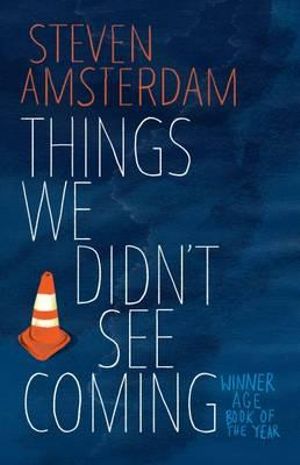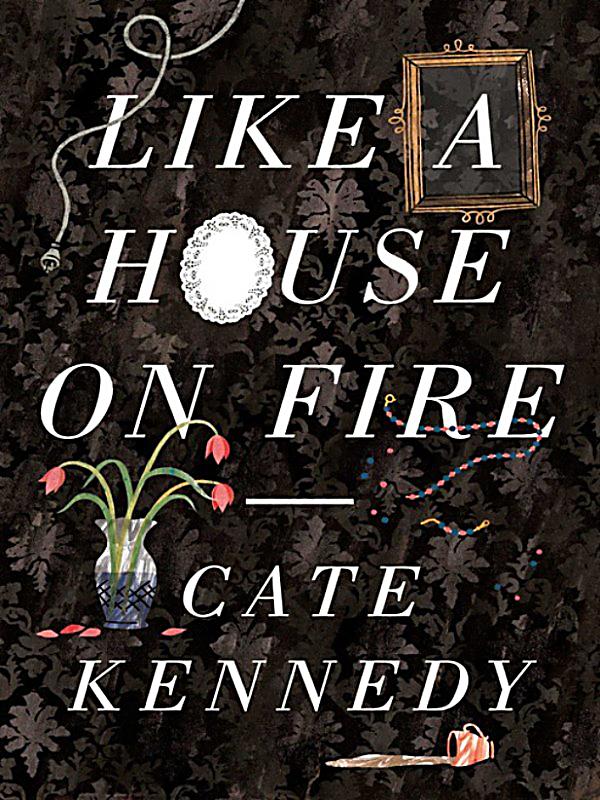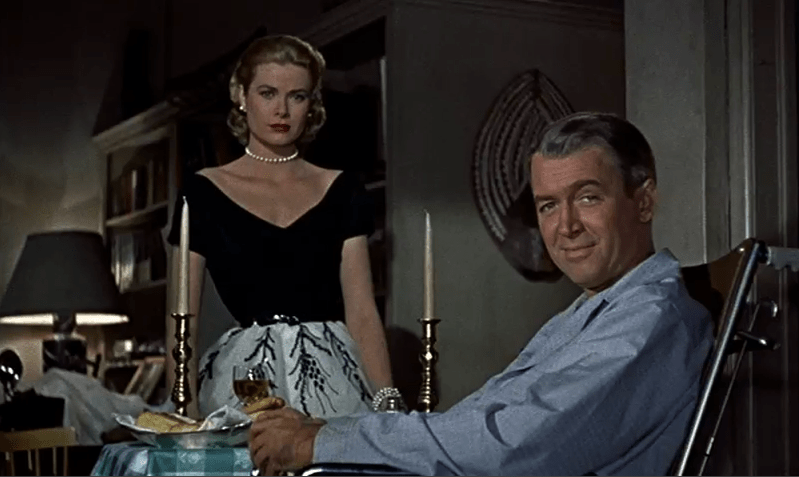
This Resource is for students in Year 12 studying ‘All The Light We Cannot See’ in AOS1: Unit 3, Reading & Creating Texts, Analytical Text Response, in the Victorian VCE 2023 Mainstream English Curriculum
Introduction
War is a dark event in history
World War II, arguably one of the darkest events of human history, has been the basis of so much writing across so many genres and authors. Anthony Doerr’s novel alludes to the merciless anonymity of death in war, juxtaposes individualism with collective national mindlessness, and seeks out innocence amidst the brutality of war.
Through the Eyes of 2 Children
Doerr ties the lives and fates of the two protagonists Marie-Laure LeBlanc and Werner Pfennig during the time of World War 11 and readers see through the eyes of these two children even though they are on opposite sides of the war. He explores how both of them struggle with identity, morality and hope, each in their own way. Their storylines converge in the bombing of Saint-Malo, demonstrating that war can be indiscriminate in its victims. War does not care if its victims are children or adults, innocent or guilty, French or German. However, their interaction also speaks to the humanity that lies in all of us, no matter how deeply buried.
Aspects of War & Light in Darkest of Times
The novel explores many aspects of the war, including the destruction, the Occupation of France, the development and training of young boys to become Nazi soldiers, as well as the need to protect the vast items of cultural and national significance, which Hitler was determined to have for the German Nazis. Doerr encourages readers to consider the ‘light’ that can emerge even in the darkest of times, to remain always morally vigilant and to applaud the bravery of those individuals who resist tyrannical regimes despite the risk to their personal safety.
Hope and Humanity in the Title
The title hints at literal sight, the limitations of the physical sense of sight, the text then suggests the most perceptive characters are blind or have limited sight. The Frenchman’s repeated plea to ‘open your eyes and see what you can with them before they close forever’ is a reminder of morality. Humanity is at the heart of the novel, identity, morality and hope shape what it means to be human but characters struggle with all these qualities at the same time. The focus on war is not about glorifying battles but on praising individuals who have the courage and strength to bear witness to the destruction and not give up hope.
Structure of the Text
Epigraphs
The Novel includes 2 epigraphs at the beginning introducing key themes and situate the text as a work of historical fiction. The first quote by historian Philip Beck details the destruction of Saint-Malo. The second from Nazi propagandist Joseph Goebbels, introduces the idea of the influence of the radio the Nazi’s would not have been able to take power without it. These epigraphs introduce the idea that scientific knowledge can be deployed for useful purposes but also for senseless destruction.
14 Sections Marked by the Date
The novel contains 14 sections marked by the date to allow the reader to follow the non-chronological narrative. The first of these is titled ‘Zero’ and is set on 7 August 1944, the key date of the bombardment of Saint-Malo. Connotations of ‘ground zero’ are suggested by numbering in this manner, and every second section of the novel returns to the key dates of August 7, 8 and 9 when the lives of Marie-Laure, Werner and Von Rumpel intersect.
Short Chapters with Perspectives of Characters
Within each section are short chapters with deceptively simple titles that provide the reader with key information. The perspectives of Marie-Laure and Werner are prioritised throughout the novel with their points of view generally alternating to establish the similarities and differences in their experiences. Other characters narrate chapters to allow readers to understand how people other than the two teenagers were apprehensive about the war and to observe the callousness of those people in the Nazi regime as well as citizens who were willing to collaborate with the enemy for personal gain.
General Plot Overview
Chronologically, we start in 1934, five years before the war. Marie-Laure is a French girl who lives with her father Daniel Leblanc, working at the Museum of Natural History in Paris. As she starts to go blind, Daniel teaches her Braille, and makes her wooden models of their neighbourhood to help her navigate. Six years later, the Nazis invade France, and they flee the capital to find Daniel’s uncle Etienne, who lives in the seaside town of Saint-Malo; Daniel was also tasked with safeguarding a precious gem, the Sea of Flames, from the Nazis.
In Saint-Malo, Daniel also builds Marie-Laure a model of the town, hiding the gem inside. Meanwhile, she befriends Etienne, who suffers from agoraphobia as a result of the trauma from the First World War. He is charming and very knowledgeable about science, having made a series of scientific radio broadcasts with his brother Henri (who died in WWI). She also befriends his cook, Madame Manec, who participates in the resistance movement right up until she falls ill and dies.
Her father is also arrested (and would ultimately die in prison), and the loss of their loved ones prompts both Etienne and Marie-Laure to begin fighting back. Marie-Laure is also given a key to a grotto by the seaside which is full of molluscs, her favourite kind of animal.
On the other side of the war, Werner is, in 1934, an 8-year-old German boy growing up in an orphanage with his sister Jutta in the small mining town of Zollverein. They discover a radio, which allows them to listen to a broadcast from miles away (it was Henri and Etienne’s), and Werner learns French to try and understand it. One day, he repairs the radio of a Nazi official, who recruits him to the Hitler Youth on account of his ingenuity (and his very blonde hair and very blue eyes, considered to be desirable traits by the regime). Jutta grows increasingly distant from Werner during this time, as she questions the morality of the Nazis.
Werner is trained to be a soldier along with a cohort of other boys, and additionally learns to use radio to locate enemy soldiers. He befriends Frederick, an innocent boy who was only there because his parents were rich. Frederick would eventually fall victim to the brutality of the instructors, and Werner tries to quit out of solidarity. Unfortunately, he is sent into the army to apply his training to actual warfare. He fights with Frank Volkheimer, a slightly ambiguous character who a tough and cruel soldier, but also displays a capacity to be kind and gentle (including a fondness for classical music). The war eventually takes them to Saint-Malo.
Also, around 1943 or so, a Nazi sergeant, Reinhold von Rumpel, begins to track down the Sea of Flames. He would have been successful ultimately had it not been for Werner, who stops him in order to save Marie Laure. As America begins to turn the war around, Werner is arrested and dies after stepping on a German landmine; Marie-Laure and Etienne move back to Paris. Marie-Laure eventually becomes a scientist specialising in the study of molluscs and has an extensive family of her own by 2014.
Characters
Marie-Laure LeBlanc
One of the two protagonists, Marie-Laure LeBlanc is an inquisitive, intellectually adventurous girl. She became blind at the age of six, but learns to adapt to this and continues to explore and discover. For most of the novel, Marie-Laure is a teenager, but by the end of the novel she’s an old woman. Marie-Laure is a warm, loving girl: at the beginning of the book, she loves her father, Daniel LeBlanc, before anyone else. After 1941, when Daniel leads her to the seaside town of Saint-Malo, she becomes close with her great-uncle, Etienne LeBlanc and her cook, Madame Manec. Marie-Laure is capable of feats of great daring. With Daniel’s help, she trains herself to walk through large cities using only her cane, and when the conflict between France and Germany escalates, she volunteers to participate in the French resistance. In spite of the joy, she gets from reading and exploring, Marie-Laure’s life is full of tragedy: the people she loves most disappear from her life, beginning with her father. As she grows older and becomes a scientist of molluscs, Marie-Laure comes to appreciate the paradox of her life: while she sometimes wants to be as stoic and “closed up” as the clams and whelks she studies, she secretly desires to reconnect with her loved ones.
Werner Pfennig
Werner Pfennig is a young, intelligent German boy and one of the two protagonists. Werner has whitish-blond hair, blue eyes, and is strikingly intelligent, so he seems like a model of the Nazis’ “Aryan ideal”—except that he has a stronger moral compass and a lesser sense of racial superiority than most of his peers. During his adolescence, Werner is close with his sister, Jutta Pfennig, with whom he lives at an orphanage (their father died in a mining accident, and their mother’s fate is unknown). As a respite from their oppressive surroundings, Werner and Jutta develop a love for science and the broadcasts they hear via their radio (broadcasts being made, unbeknownst to either of them, by Marie’s own grandfather Henri). As Werner grows older, he develops an aptitude for engineering and science, but is morally challenged when he is accepted into Schulpforta (a prestigious Nazi school) and then during his stint in the German army. Werner uses his skills to help Volkheimer and other soldiers murder hundreds of people—some of them civilians—and wonders, again and again, if he’ll be able to live with his choices. Throughout his time in the army, Werner remains devoted to his sister, Jutta, and often thinks back to their carefree days together in the orphanage. His favourite memory of Jutta—listening to radio broadcasts in the orphanage—ultimately contributes to his decision to spare Marie-Laure’s life when he realizes that she is connected to these broadcasts.
Daniel LeBlanc
Marie Laure’s father, Daniel LeBlanc, is selflessly devoted to his daughter—indeed, he spends long hours teaching her Braille and crafting elaborate models of Paris (and later Saint-Malo) to teach her how to walk through the city without her eyesight. In general, Daniel is clever and good with his hands—a talent that makes him an accomplished locksmith at the Museum of Natural History before he’s forced to flee the Germans along with his daughter. Because his employers at the Museum have tasked him with the protection of a priceless diamond, the Sea of Flames, Daniel leaves his daughter in Saint-Malo, is later imprisoned, and eventually dies of influenza. Daniel’s absence in Marie-Laure’s life is one of the defining and most tragic themes of the novel—a sign of their sincere love for one another.
Frank Volkheimer
Frank Volkheimer is the huge, intimidating, and morally ambiguous staff sergeant who works as an assistant at Werner’s school, the National Institute, and later commands Werner through his time in the German army. He can be tough and cruel, especially with prisoners of the German army, but he’s always gentle with Werner, and saves Werner’s life on more than one occasion. It’s left unclear how loyal Volkheimer is to the German army—it’s suggested that he’s willing to ignore orders from his commanders because he values his friendship with Werner more highly. In spite of his sins during World War II, Volkheimer is arguably “good” at heart, and his loyalty to Werner motivates much of the action in the final 100 pages of the book. At the end of the war, he is left a shell of his former self and like Frederick represents a victim of the damage war does when he is haunted by his wartime experiences and lives a life subjected to PTSD.
Jutta Pfennig
Werner’s beloved sister Jutta is the moral constant against which Werner measures his own sins. Jutta is intelligent, loving and artistic and has a well-developed sense of moral decency that enables her, even from a young age, to see through the German war propaganda and question the rightness of the country’s actions in ways others do not. This means that even when Werner is recruited for the prestigious Nazi school Schulpforta. Jutta is disgusted and when he’s sent off to fight in the Nazi army, she fears he will develop a dangerous loyalty to Nazi Germany. Nevertheless, Jutta and Werner remain extremely close with one another, and throughout World War II, they think of each other and remember their carefree days as children through memories and letters. Years after Werner’s death, Jutta continues to love and remember her brother, and his lasting influence leads her to eventually make contact with Marie-Laure.
Frau Elena
Frau Elena is the head of the orphanage where Jutta and Werner grow up. She’s a gentle, kind woman, and treats all her children well like a mother figure, despite a severe lack of resources. When the Nazis rise to power in Germany, she’s bullied for being a Frenchwoman—but her decision to teach all her children to speak French leads (years later) to the thematic centre of the novel: the encounter between Werner and Marie-Laure in Saint-Malo. She bolsters Werner’s self esteem by believing in him thinking ‘you’ll do something great’ in the future.
Great Uncle Etienne LeBlanc
Etienne LeBlanc is an old, eccentric, and extremely reclusive (it’s implied he has post-traumatic stress disorder from World War I) man who lives in the seaside town of Saint-Malo, France. When his nephew, Daniel LeBlanc, and his grandniece, Marie-Laure, come to live with him following the Nazi invasion of Paris, he becomes close with Marie-Laure, often spending long chunks of time reading books to her. As time passes, Marie-Laure’s courage inspires Etienne to take his own actions against the German soldiers, and he bravely aids the French resistance by broadcasting important information about the German troops on his radio. Etienne’s love for Marie-Laure is confirmed when, frightened that she’s been arrested, he overcomes his terror of going outside and rushes out of his house to find her. He later tells his grandniece, “You’re the best thing that has ever happened to me.”
Frederick
Frederick is a fellow cadet with Werner at Schulpforta and they become friends. He demonstrates a mix of character traits, is patriotic and loyal to the Fuhrer and the Nazi cause and believes it is right to be at the school but at the same time he does disobey an order that he considers morally wrong. When he refuses to throw water on a prisoner, he represents a person with a strong conscience than any of the other students and does not retaliate when he is selected as the weakest of the group and punished with floggings at the hands of the teachers and fellow students. He inspires Werner to consider standing up against the regime but in the end, he receives injuries at the hands of his peers that ensure he will never function again normally, brain damaged and in need of care from his mother. He represents a moral character and like many others is a victim of the damage of the Nazi regime during the war.
Madame Manec
Worked for the LeBlancs since Etienne was a child. She is kind, insightful, dedicated, generous and warm and develops a strong relationship with Marie-Laure. She is actively involved in the French Resistance encouraging Etienne to become involved. She is one of the characters that Doerr considers is a strong person who put themselves at risk to oppose the German occupation of France. The novel shows that all kinds of people could find ways of fighting against the Nazis and remain loyal to France.
Sergeant Major Reinhold von Rumpel
His motivation is to locate the real Sea of Flames in the hope that it will cure his cancer and give him immortality. He chases his target unrelentingly and later in the besieged city of Saint-Malo he waits in Marie’s house but Werner kills him and saves Marie. He represents the evil of the Nazi regime and the destructive nature of war where great art works and culture was looted by the Nazi’s for their own personal gain.
| Themes & Symbols | ||
| War, destruction, victims & perpetrators | Nazi Regime & propaganda | Occupation of France & French Resistance |
| Fate | Free will | Pride, duty, loyalty & nationalism |
| Family loyalty & love | Science & logic | Sight, ways of seeing & perception |
| Blindness | Memories | Morality & integrity |
| Conformity & resistance | Weakness & strength | Purpose & belonging |
| Humanity | Hope | Light & dark |
| Hitler Youth & loyalty to Fuhrer | Sea of Flames | Models of Paris & Saint-Malo |
| Whelks, Molluscs & Shells | Radio | Power of art, artefacts & culture |















